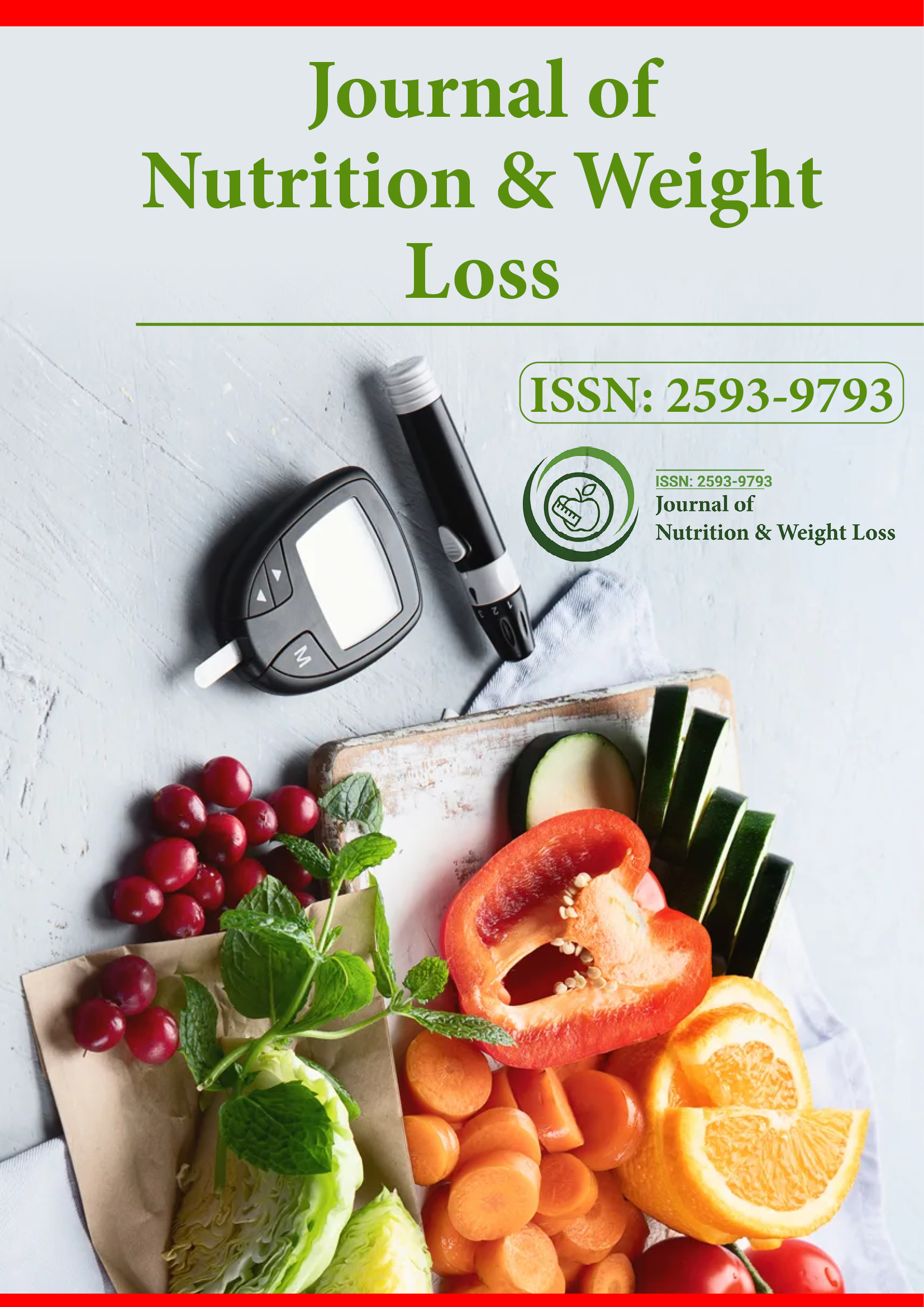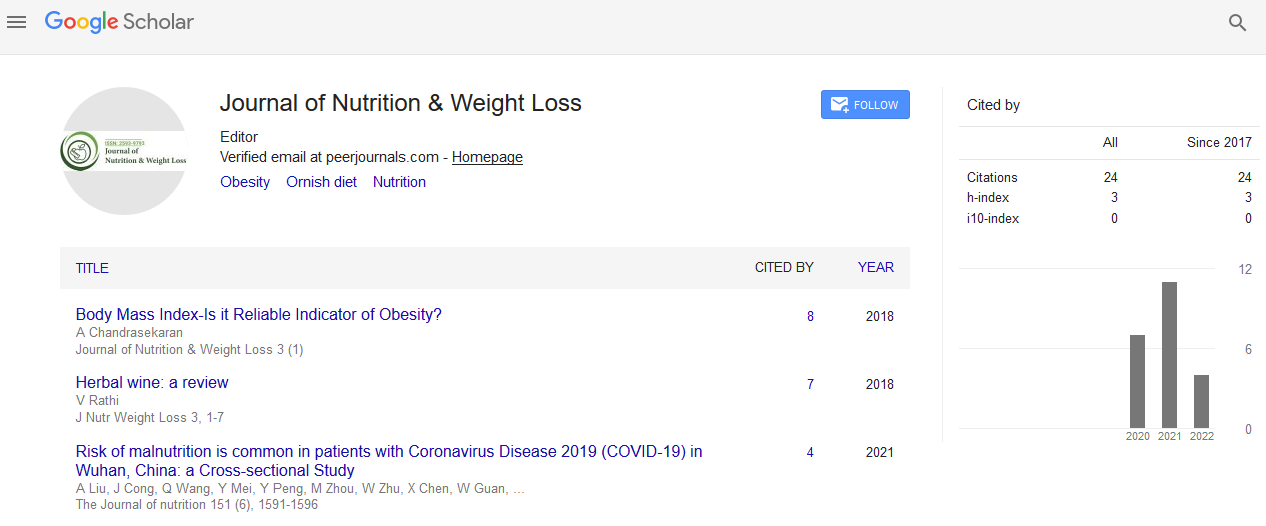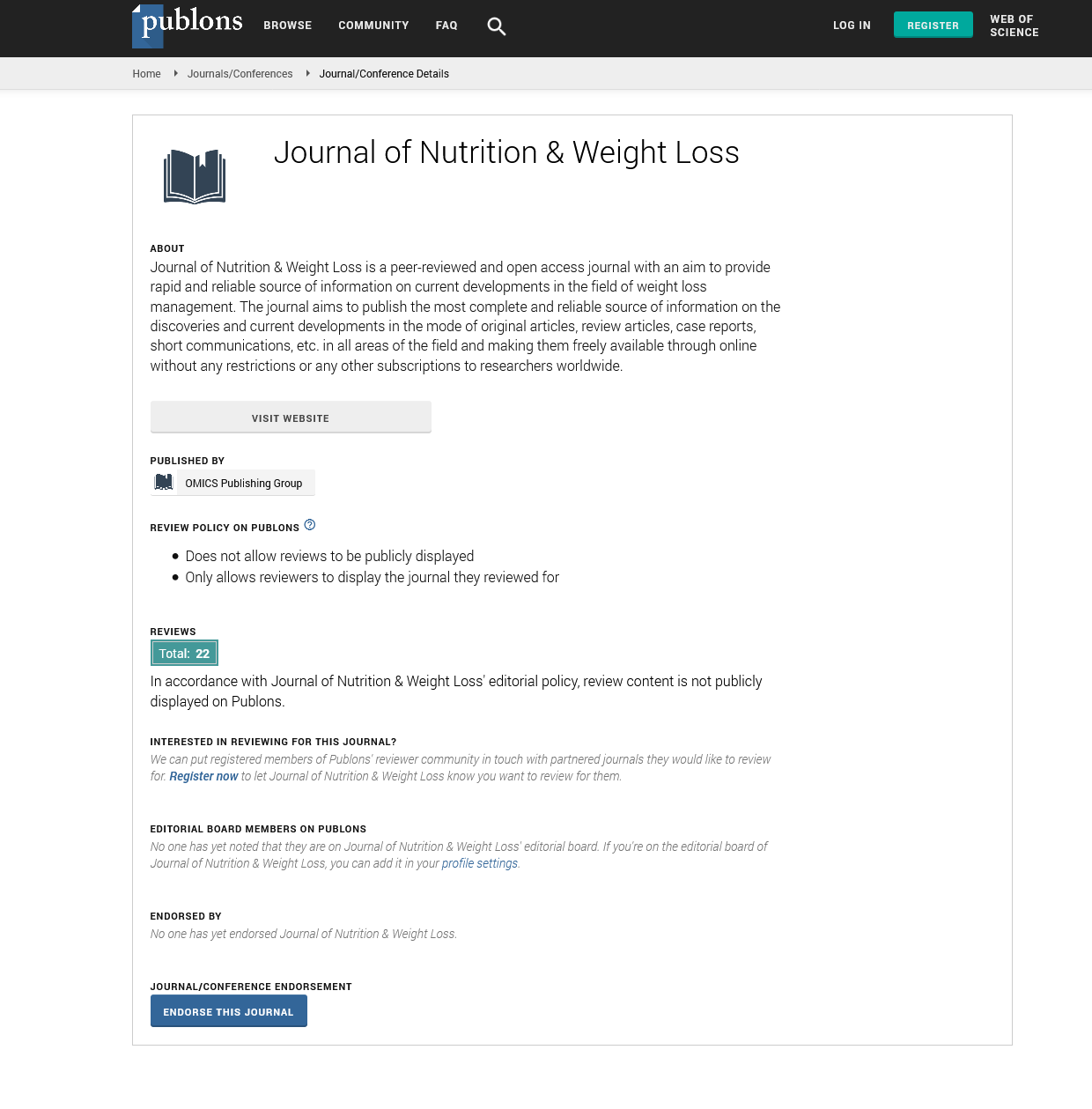Indexed In
- RefSeek
- Hamdard University
- EBSCO A-Z
- Publons
- Euro Pub
- Google Scholar
Useful Links
Share This Page
Journal Flyer

Open Access Journals
- Agri and Aquaculture
- Biochemistry
- Bioinformatics & Systems Biology
- Business & Management
- Chemistry
- Clinical Sciences
- Engineering
- Food & Nutrition
- General Science
- Genetics & Molecular Biology
- Immunology & Microbiology
- Medical Sciences
- Neuroscience & Psychology
- Nursing & Health Care
- Pharmaceutical Sciences
Opinion Article - (2022) Volume 7, Issue 3
Psychosocial Correlates of Dietary Behaviors of Adolescents
Mary Downes*Received: 02-May-2022, Manuscript No. JNWL-22-16969; Editor assigned: 05-May-2022, Pre QC No. JNWL-22-16969 (PQ); Reviewed: 19-May-2022, QC No. JNWL-22-16969; Revised: 26-May-2022, Manuscript No. JNWL-22-16969 (R); Published: 02-Jun-2022, DOI: 10.35248/2593-9793.22.7.137
Description
In order to successfully promote healthy eating behavior among children and adolescents, it is vital to understand the correlates of food consumption. Children's and adolescents' calcium intakes were favorably related with the use of sweetened dairy products. Consumption of presweetened cereals enhanced the chance of meeting recommendations for the key shortfall micronutrients calcium, folate, and iron in children and adolescents, but consumption of sugar-sweetened drinks, sugars and sweets, and sweetened grains lowered the likelihood of reaching the DRI for those kind of nutrients. Quantitative studies of food intake determinants in children and adolescents aged 3 to 18 years were included. The selection and evaluation procedure generated data on the nation, study design, population, intake measurement tool, and research study quality. There were 77 articles in all. Among children and adolescents, several possible correlations have been investigated. However, due to a paucity of study, sufficient evidence for many suggested associations is absent. Perceived modeling, dietary goals, norms, liking, and preferences are the best-supported correlations in the literature. The most stable and beneficial relationships with eating behavior are perceived modeling and dietary objectives.
Adolescence is a time in one's life when physical, psychological, and social changes are noticeable. Body image issues have been linked to the physical changes that occur throughout this period of life in both boys and girls. Because of their increased muscular mass, boys often have favorable thoughts about their growing physique, which may be socially helpful. Due to growing body fat, which contradicts the cultural ideal of a thin figure, girls become unhappy with their bodies after puberty. As a result, it stands to reason that a rise in body weight may have a greater negative influence on the well-being of female teenagers, thus leading to an increase in dieting. There has been an increase in the number of children and adolescents dieting. Dieting allows a person to lose weight and become smaller, more attractive, and more successful. Dieting, according to popular belief, is affordable, socially acceptable, and, most importantly, has no noticeable adverse effects.
Because of the increased growth rate and changes in body composition associated with puberty, nutritional demands throughout adolescence are higher. Other variables that may alter teenagers' dietary choices, nutrient intake, and consequently nutritional status coincide with the rapid rise in energy and nutrient requirements. The desire for independence and acceptability by peers, more mobility, more time spent at school and/or employment activities, and obsession with selfimage is all variables that contribute to the unpredictable and unhealthy eating practices that are widespread during adolescence. Adolescents may also have established attitudes about their ethnic cuisines and eating habits that mirror their family's ideas about what is good and what is harmful, which may or may not be correct. Adolescents in the United States and many other nations have unhealthy eating habits.
Psychological Factors such as Family connectivity measured how people felt about their parents' and family's care, attention, and understanding (for example, "your parents care about you"). Nonfamily members' views of caring and connectivity (e.g., in school or church; "school people care about you") were measured. Concerns about peer connections like as treated by friends, being liked by others, losing a closest friend and one's attractiveness are all judged by peer acceptability. Emotional stress was determined by looking at how stressed people felt, how worried they felt, how discouraged they felt, how satisfied they were, how tired they were, and how much energy they had in the previous month. Moving, a parent losing his or her job, a family member trying suicide, or getting treated for a significant mental or emotional illness were all examples of stressful events that occurred inside the family in the previous year. Body image is a metric that measures self-esteem and weight satisfaction.
Citation: Downes M (2022) Psychosocial Correlates of Dietary Behaviors of Adolescents. J Nutr Weight Loss. 7:137
Copyright: © 2022 Downes M. This is an open access article distributed under the terms of the Creative Commons Attribution License, which permits unrestricted use, distribution, and reproduction in any medium, provided the original author and source are credited.


